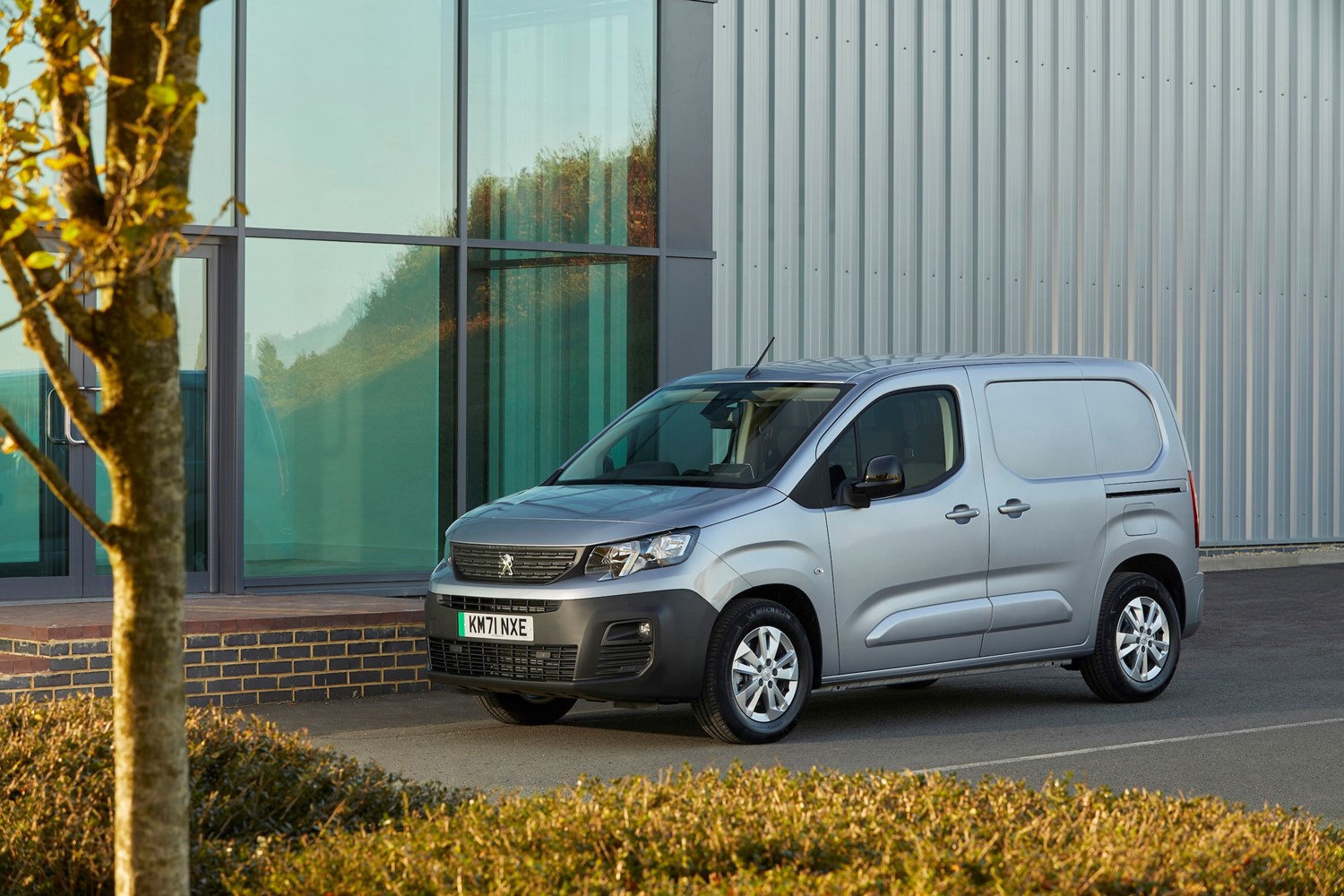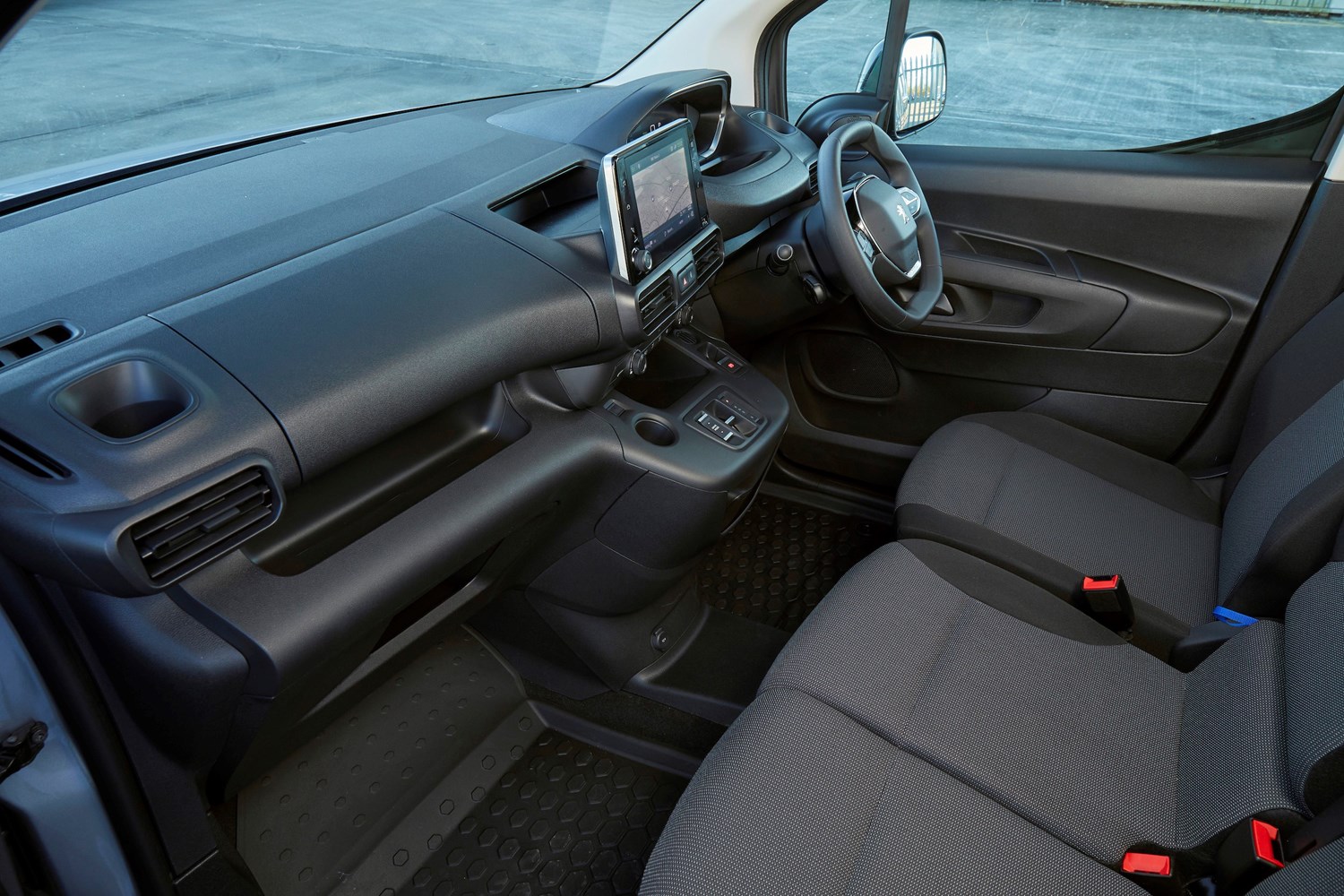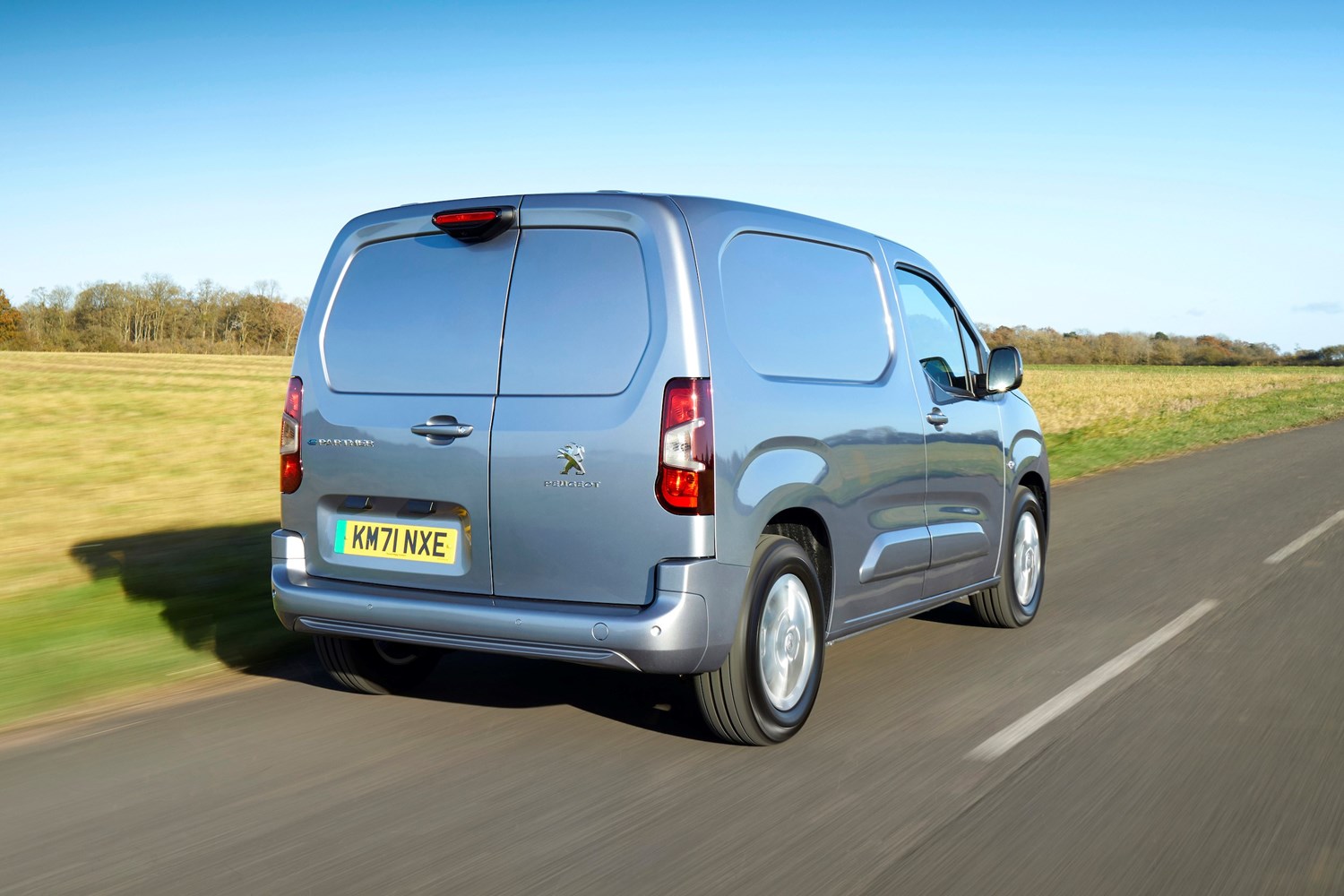Latest model
The third generation Peugeot Partner debuted in 2018, and as well as sitting alongside the Citroen Berlingo, a third sibling model is now launched – the Vauxhall Combo – after Peugeot’s owners bought the brand.
This model was another noticeable step forward, with this latest Partner boasting the same ‘i-Cockpit’ digital instrument cluster that’s been used in Peugeot’s car range. It generally aims to offer a more car-like feel, with an eight-inch touchscreen included along with an impressive level of technology, including an ‘overload system’ that can tell you if you’ve exceeded the payload and an around-view camera.
A ‘Crew Van’ was launched in 2019 with a set of rear seats, while an electric e-Partner launched in 2021, bringing a range of up to 171 miles, with no compromise on versatility or space. It’s worth noting the passenger-carrying version of the latest Partner is called the Rifter, and therefore won’t be covered in this review.
Value for money
By compact van standards, the Partner is quite attractively priced, with the range starting from £18,755 (excluding VAT). You also get a decent level of standard equipment too, including a digital dial setup, useful rear parking sensors and electric mirrors. If you do a lot of miles, the Professional model would get our vote, though, with this adding cruise control, an eight-inch touchscreen and electric folding mirrors, starting from £19,035 (excluding VAT).
As for used Peugeot Partners, prices start from as little as £1,500 for older, scruffy but usable vans, which makes it an attractive option for those looking for a commercial vehicle on the budget. As for the latest generation, at the time of writing, the most affordable models started from around £11,000 plus VAT, which would buy a 2019 example with around 60,000 miles on the clock. Increase that budget to around £13,500 if you want a low-mileage model.
Looks and image
Peugeot has been striving to give its commercial vehicles a more car-like feel, and it’s succeeded with the Partner. Though there’s no hiding the van-like styling, the latest generation’s sleeker front end and smart lighting certainly makes it look more modern than ever. For alloy wheels, you will need to opt for the top-spec Asphalt version, though.
Moving inside, the Partner arguably has the smartest interior out of its Citroen and Vauxhall stablemates, with a modern and driver-centric design. The i-Cockpit gives the cabin a modern feel, while the small steering wheel is carried over from Peugeot’s car range too. Some do struggle to find a good seating position, however, so it’s worth checking if you can get comfortable. It generally feels well put together and comfortable as well, though some of the controls are quite fiddly to use.
This latest Partner is far more pleasant to drive compared to its predecessor too, with a much better ride and comfort, making it one of the best vans on the market for those that do a lot of miles. It handles far more like a car too, while road and wind noise are pleasantly subdued. A good mix of diesel engines – or the new electric model – make it a great option for a wide range of drivers.





